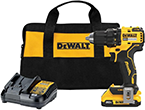Chimney cleaning is for wood-burning fireplaces. If you have a gas fireplace, you shouldn't have to worry about smoke and soot build-up in your chimney. If you use your wood-burning fireplace often, you will probably want to clean your chimney about once a year. This, of course, is an estimate; don't wait an entire year if you know that the circulation in your chimney is restricted. A sign of this would be smoke building up inside your home—if the chimney is blocked, the smoke will find somewhere else to go.
The reason you will want to clean out your chimney is to prevent creosote buildup and chimney fires. Creosote is a mix of steam and vaporized carbon materials that condense in the chimney. This condensation happens as the gas and vapor rises and cools toward the top of the chimney. It clings to the chimney sides and creates a black, tar-like substance. This residue is extremely flammable and, if ignited, can cause a chimney fire.
Your tools for chimney cleaning:
Once you have gotten dressed for the job, prepare the room that you will be working in. Cover all the furniture and carpet if you are worried that it will get dirty. Next, look up inside of your fireplace and locate the damper. This is a metal door at the mouth of the chimney. Open the damper so all the debris will be able to fall out. If you can, before venturing out onto the roof, tape a damp cloth or sheet over the fireplace opening. This will prevent the dust and soot from billowing out into the room. When you get up on the roof, remove and clean the chimney cap if your chimney has one.
How you proceed from here will depend on the cleaning brushes you have obtained. If you are working with a brush on a rope, weight down the lower end of the brush. The weight will hold the brush down and make it easier to scrub against the chimney walls. The weight should be a minimum of twenty pounds. Lower the weight and brush into the chimney and, starting from the top, scrub your way around and down as far as the brush will reach.
If you wish, rather than using a weight, attach ropes to both ends of the brush and get a partner to work with you. One of you will be on the roof while the other will be in the house at the fireplace. Pull the brush up and down so that it will dislodge the build-up inside the chimney.
Be aware that the long pole and attachments may be heavy. Know your own strength. Also, be sure that you don't drop the pole or anything else down the chimney. You are trying to clean out obstructions, not add them.
Once you have brushed as much as you can out of the chimney, take the brushes out, clean them off, and store them in a safe place for later use. Clean out the fireplace, removing all the fallen ash and soot. Then, taking your stiff hand brush, scrub the inside of the fireplace. This includes the walls, the floor, and the lip around the damper. The lip is especially important because it may have collected ash during the scrubbing process.
Once again, sweep out your fireplace and use a vacuum to get the residue soot and ash. Don't forget to close the damper once you are finished cleaning.

Cordless, Compact, and Powerful! DeWalt's 20-volt drill-driver kit packs a big punch in a small package, with a powerful high-performance motor tucked away inside a compact design. A great addition to the tool chest of any professional or DIYer! Check out DeWalt 20-Volt Drill/Driver Kit today!
Repairing the shingles of a roof is, or can be, a fairly scary prospect for many people. Well, fear no more, since you ...
Discover MoreIf you are planning on doing any type of roofing work then you need to know what equipment to use. Roofing equipment ...
Discover MoreEvery so often, the roof of our homes will need a little care and maintenance. One of the most common ways that we have ...
Discover MoreThere are currently no comments for this tip. (Be the first to leave your comment—just use the simple form above!)
Copyright © 2025 Sharon Parq Associates, Inc.
Comments